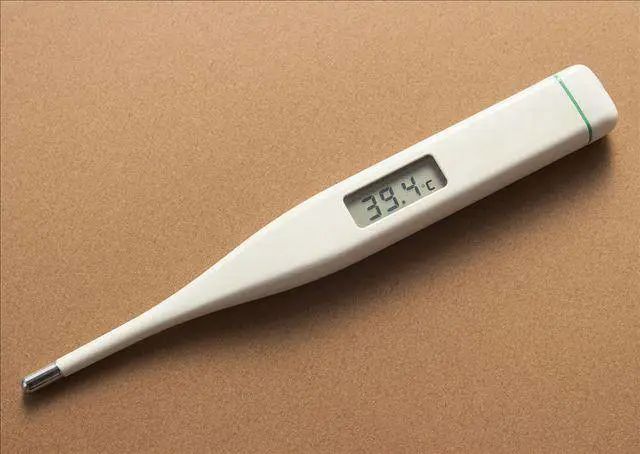 Click the blue text above · Follow us
Click the blue text above · Follow us
Damp-Heat Syndrome is a term in Traditional Chinese Medicine (TCM) that refers to the accumulation of damp-heat within the body, obstructing the functioning of the organs and meridians, leading to various pathological changes associated with damp-heat symptoms throughout the body. Damp-Heat Syndrome can generally be divided into four types: Spleen-Stomach Damp-Heat Syndrome, Liver-Gallbladder Damp-Heat Syndrome, Large Intestine Damp-Heat Syndrome, and Bladder Damp-Heat Syndrome. Below, we will discuss each in detail.
Symptoms of Spleen-Stomach Damp-Heat
1. Abdominal Discomfort
According to TCM theory, the stomach is responsible for digestion, while the spleen is responsible for transportation and transformation. If damp-heat occurs in the spleen and stomach, their digestive functions will decline, leading to symptoms such as acid regurgitation, heartburn, and abdominal distension.
2. Abnormal Bowel Movements
When damp-heat evil is present in the body, it can also affect the intestines, resulting in abnormal bowel movements characterized by sticky stools and a feeling of incomplete evacuation.

3. Heaviness in the Limbs
In TCM, the spleen governs the muscles and limbs. When damp-heat affects the spleen, its function is impaired, leading to a feeling of heaviness in the limbs.
In addition to the above symptoms, patients may also experience nausea, vomiting, excessive thirst, itchy skin, low-grade fever, and profuse sweating.
Symptoms of Liver-Gallbladder Damp-Heat
1. Abdominal Distension
When damp-heat occurs in the liver and gallbladder, the transportation function of the spleen and stomach is affected, leading to gastrointestinal discomfort such as abdominal distension, nausea, vomiting, and loss of appetite.
2. Dry Mouth and Bitter Taste
For individuals with significant internal damp-heat, if not treated promptly, it may lead to liver fire rising, resulting in symptoms such as dry mouth, bitter taste, and bad breath.

3. Emotional Instability
In TCM, the liver governs the smooth flow of qi. When damp-heat affects the liver, its ability to regulate qi is impaired, leading to stagnation and symptoms of anxiety and irritability.
In addition to the above symptoms, liver-gallbladder damp-heat may also cause women to experience yellowish, foul-smelling vaginal discharge, itching, and burning sensations, while men may experience scrotal eczema and swelling or pain in the testicles.
Symptoms of Large Intestine Damp-Heat
Large intestine damp-heat is a common digestive system disorder characterized by symptoms such as abdominal pain, diarrhea, and burning sensation in the anus. This article will detail the symptoms, treatment methods, and preventive measures for large intestine damp-heat to help readers better understand and prevent this condition.
Firstly, the typical symptoms of large intestine damp-heat include abdominal pain and diarrhea. Abdominal pain often presents as dull or cramping pain, typically located around the navel or lower left abdomen, with varying degrees of intensity, often accompanied by nausea. Diarrhea is characterized by loose stools, increased frequency, and sometimes the presence of pus or mucus. Additionally, patients may experience symptoms such as short, dark urine and yellowish color.

Secondly, another typical symptom of large intestine damp-heat is a burning sensation in the anus, which usually occurs after defecation, with patients feeling a burning or heat sensation in the anal area. This symptom can persist for a long time after defecation.
In addition to the above symptoms, patients with large intestine damp-heat may also experience accompanying symptoms such as fever and sweating. In severe cases, dehydration and electrolyte imbalances may occur, potentially requiring hospitalization.
In terms of treatment, the principle for managing large intestine damp-heat is to clear heat and resolve dampness. Common treatment methods include herbal medicine, dietary adjustments, and lifestyle changes. Herbal treatments may include heat-clearing and damp-resolving herbs such as Huang Lian (Coptis chinensis), Huang Bai (Phellodendron), and Qin Pi (Fraxini Cortex), as well as herbs that harmonize the stomach and intestines like Chen Pi (Aged Tangerine Peel), Mu Xiang (Aucklandia), and Sha Ren (Amomum). Dietary adjustments should focus on easily digestible, light foods while avoiding greasy and spicy foods. Lifestyle changes include keeping warm, avoiding late nights, and engaging in moderate exercise, which can help regulate intestinal function and promote recovery from the disease.
Finally, preventive measures for large intestine damp-heat include maintaining dietary hygiene, avoiding excessive alcohol consumption, and steering clear of stimulating foods. Additionally, maintaining good lifestyle habits and a positive mindset, such as regular exercise and a cheerful disposition, can effectively prevent the occurrence of large intestine damp-heat.
Symptoms of Bladder Damp-Heat
1. Abnormal Urination
The bladder is an important organ in the urinary system, primarily responsible for excreting waste and excess water produced during metabolism. Therefore, when damp-heat occurs in the bladder, it can lead to abnormal urination, often characterized by dark yellow urine, and in severe cases, visible blood in the urine, accompanied by symptoms such as frequent urination, urgency, and incomplete urination.
2. Fever
Due to the influence of bladder damp-heat, some patients may also experience fever, with some experiencing high fever in more severe cases.

3. Other Symptoms
In addition to the above symptoms, bladder damp-heat may also lead to symptoms such as yellow tongue coating, red tongue, chest tightness, fatigue, and dry stools.
Damp-heat syndrome is a common TCM pattern, primarily manifesting in the digestive system with symptoms such as loss of appetite, indigestion, bad breath, and diarrhea. The etiology and pathogenesis are related to improper diet, humid environments, and emotional stress. In southern regions, the combination of high temperatures and rainy weather in summer makes damp-heat syndrome a prevalent condition.
The symptoms of damp-heat syndrome include loss of appetite, indigestion, bad breath, and diarrhea. These symptoms can negatively impact the patient’s life, leading to poor mental state and fatigue. Preventing damp-heat syndrome requires a multifaceted approach, such as adjusting dietary habits to avoid excessive consumption of greasy and spicy foods, and increasing the intake of foods that help clear heat and detoxify, such as mung beans, bitter melon, and watermelon; adjusting environmental factors to maintain a dry and well-ventilated indoor environment, avoiding prolonged exposure to damp conditions; and utilizing herbal treatments such as heat-clearing and damp-resolving herbs.
Treating damp-heat syndrome requires a comprehensive approach, including dietary changes, environmental adjustments, and herbal treatments. In the future, with ongoing research and treatment advancements in TCM, we will have more methods to address damp-heat syndrome, safeguarding people’s health.

 Scan to Follow De Zhi Ti Mei Lao Five Educations in Parallel
Scan to Follow De Zhi Ti Mei Lao Five Educations in Parallel

